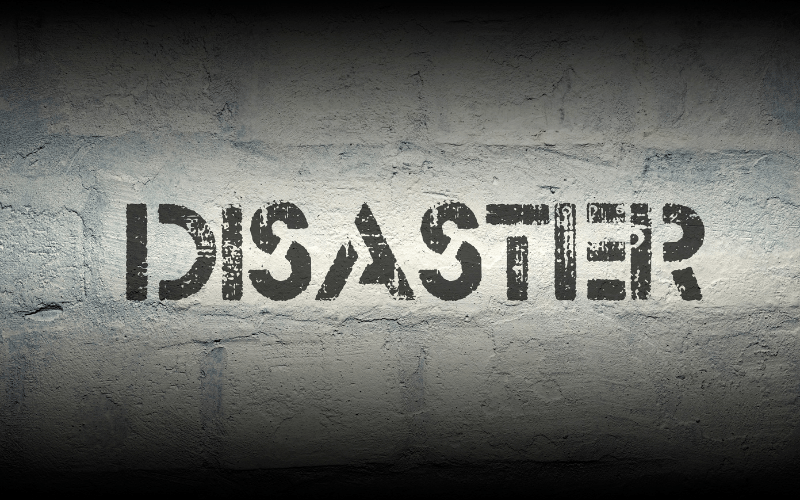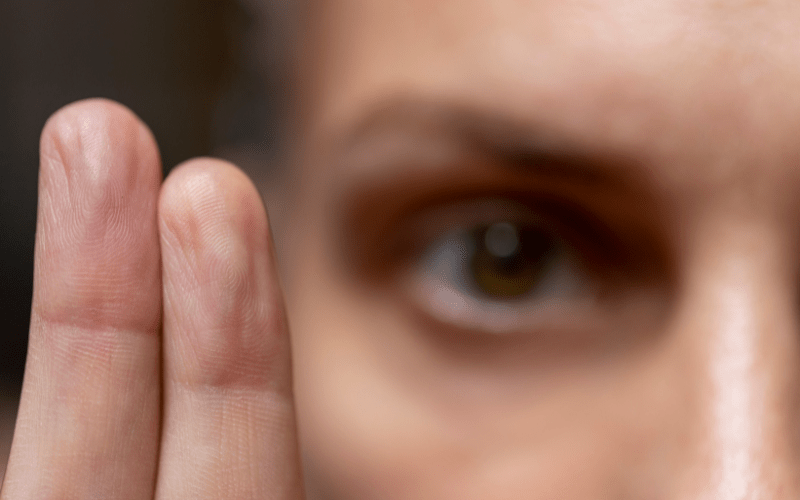EMDR Therapy and Psychedelics
Guest Blog Post by Katja Cahoon, LCSW
 Tell us a little bit about you, your experience becoming an EMDR therapist, and your experience working with psychedelics.
Tell us a little bit about you, your experience becoming an EMDR therapist, and your experience working with psychedelics.
I am an LCSW in private practice. I became a certified EMDR therapist in 2018. EMDR principles continue to be foundational in everything I do. I became interested in psychedelic therapy through my own positive experiences and trained with Polaris Insight Center (ketamine) in 2020 and MAPS (MDMA) in 2022. I have been offering individual and group ketamine-assisted psychotherapy (KAP) since then. I also work as a lead therapist on FDA-approved psychedelic Phase I and Phase III trials with psilocybin and 5-MeO-DMT.
Can you briefly help us understand a little more about the use of therapeutic psychedelics and your take on why they have become more popular recently in therapeutic settings?
Books and shows like Michael Pollan’s How To Change Your Mind are certainly contributing. On a deeper level we are dealing with a loneliness and mental health epidemic and many people are desperate. We also have a growing curiosity about the personal development aspect and growth potential of these substances.
I mostly work adjunctively, meaning I do short-term psychedelic work with clients who have a regular therapist and who feel they have tried “everything,” including in many cases medication, various kinds of therapy, and they are still struggling and often desperate and hopeless. KAP and work with other psychedelics offers hope and the potential to address and work with issues that other kinds of therapy have not been able to resolve or integrate.
How can EMDR therapy and psychedelics complement each other in treatment? What successes have you seen?
EMDR and psychedelic therapy, especially KAP, are a great combination because they have a lot of similarities. For starters, they both have distinct phases. KAP includes a history-taking phase, a thorough preparation phase (including psychoeducation, resourcing, and relationship building), and then the active treatment (working with ketamine in session and following each active session with an integration session). I work with psychedelic doses, meaning that the actual ketamine sessions tend to be more inner-directed including a whole range of experiences from the autobiographical to the more somatic and visual, to spiritual and other transpersonal experiences. Others like Sunny Strasburg have pioneered wonderful work using more psycholytic (lower) doses in combination with phase 4 desensitization using tappers. Other similarities include that KAP has something akin to the AIP model – we use the language of inner healing intelligence or inner wisdom – our innate ability to heal. Ketamine (and other psychedelics) help soften obstacles to healing like protective memory networks or blocking beliefs and help clients confront difficult memories or emotions in order to integrate those. In some cases, this happens spontaneously and in others, we need to offer support – you could think of it as interweaves including gentle somatic support, verbal support, or simply through our therapeutic presence. Since I work mostly adjunctively, I rarely have the luxury of having a comprehensive EMDR treatment plan. I have noticed nonetheless that targets move much faster. For example, a client might get in touch with a difficult memory during a KAP session. During the integration session, I will do a full assessment of that memory, followed by desensitization (mostly using visual BLS). Anecdotally those targets move a lot faster, often the SUD is already quite low due to the processing the client did during the ketamine session. In other cases, we might work more on installation or even do future rehearsals during integration, such as strengthening positive beliefs and working on matching and empowering behaviors. Ketamine enhances neuroplasticity (our ability to change) especially in the 24-48 hours after taking ketamine which of course helps and is further increased by the rapid change potential of EMDR.
I also employ KAP with my own EMDR clients and similar to my adjunctive clients, memories and targets can shift more rapidly, or clients can better get in touch with difficult material that was previously blocked. Ketamine has slight anxiolytic properties and can therefore help a client get in touch with material that was previously too distressing. Due to ketamine’s effect of quieting the Default Mode Network (DMN), it can also stop the ruminative, repetitive negative cognitions, which then makes room for positive cognitions. Like EMDR psychedelics dramatically enhance the connection between different brain regions, which helps clients to have a new experience of themselves, outside and beyond well-worn thought pathways, beliefs, and stories.
Are there cautionary measures you would like to mention regarding the use of EMDR therapy and psychedelics?
As you might already glean from the above KAP can be very intense just like EMDR. We have to evaluate very carefully who is suitable and if clients are resourced enough. We need to make sure that there is no undiagnosed dissociative disorder or personality disorder, no active mania or hypomania, and be mindful of a family history of schizophrenia and other serious mental health conditions. In general, KAP and other psychedelics work better for more rigid thought / mental patterns such as seen in depression, anxiety, OCD, and others vs. disorganized mental health diagnoses such as schizophrenia, delusions, etc.
With the growing popularity of psychedelics, you might have clients that venture out on their own, whether they try “underground” work (working with an unlicensed person or with currently scheduled substances) or legal ketamine therapy. I believe in a harm reduction model that supports and resources clients so they can make an informed decision and be as safe as possible vs. telling them outright that this is bad, or they should not do it.
There is also a great role for EMDR in helping clients who have had challenging psychedelic experiences (so-called “bad” trips) – please see below for a blog post about this.
Are there any myths you’d like to bust about using EMDR therapy and psychedelics?
Psychedelics, whether alone or in combination with EMDR, are not a miracle cure and don’t magically fix clients’ issues. They are still a therapy and might require multiple sessions, especially with C-PTSD or severe attachment injuries. Neither EMDR nor psychedelics work for everyone or in every case.
On the other hand, we should not be afraid of working with psychedelics and EMDR. We are still dealing with the fallout from the war on drugs and the scare tactics that started with Reefer Madness and other propaganda. Yes, psychedelics are potent and powerful, and we need to be careful AND in the right setting, with a responsible and well-trained provider their healing potential is significant, especially if combined with EMDR. Lasting negative effects are actually quite rare – again if done in a responsible, safe, therapeutic setting. In the FDA Phase I trials we work with very high doses of psychedelics in order to evaluate their safety and I am constantly amazed at how well even high doses are tolerated.
What multicultural considerations might EMDR therapists need to keep in mind regarding EMDR therapy and psychedelics?
This is such an important topic and question! We already have a scarcity of BIPOC, queer, and transgender therapists and in the psychedelic field, this is even more pronounced. At the same time, the power differential is increased – psychedelic work requires that someone enter a very vulnerable state. Additionally, with underrepresented and marginalized populations there are often additional levels and layers of trauma that are systemic and, in many cases, ongoing, like microaggression and continued discrimination. We need to hold that very gently, carefully, and skillfully, including the increased potential of transference with psychedelics. Ideally, we would have more therapists belonging to underrepresented populations. It is also really important to be well-informed about these topics and seek additional training if necessary. For example, attend EMDRIA conference presentations about this topic. In my work, I address topics of culture, race, sexual identity and orientation, and more, in the beginning of working together – including that anger, grief, and any other responses to repeated experiences of bias and discrimination are welcome. I am also very careful in assessing how comfortable a person is saying no or speaking up and remain attuned to any ruptures in the therapeutic relationship.
Do you have any favorite free EMDR-related resource that you would suggest to EMDR therapists interested in learning more about using EMDR and psychedelics?
Yes, there is a lot of good material out there! These articles dive a little deeper:
- EMDR as a Preparation and Integration Tool in Psychedelic-Assisted Therapy: A Collaborative Case Study by Jocelyn Rose and Hannah Raine-Smith in EMDR Therapy Quarterly
- Psychedelic-Assisted EMDR Therapy (PsyA-EMDR): A Memory Consolidation Approach to Psychedelic Healing by Hannah Raine-Smith and Jocelyn Rose in EMDR Therapy Quarterly
- EMDR Therapy and Ketamine by Penny Monetti, LPCC in EMDRIA Focal Poing Blog
This article discusses employing EMDR in difficult psychedelic experiences:
- Utilizing Eye Movement Desensitization and Reprocessing Therapy to Help Process Challenging Experiences with Psychedelics by Dr. Alana Roy for Mind Medicine Australia
Here are two good podcasts that deepen many of the themes I also touch on:
- EMDR and Psychedelics – Interview with Adam O’Brien by The Art and Science of EMDR
- Psychedelic-Assisted EMDR Therapy with Rotem Brayer by The Art and Science of EMDR
Anything else you’d like to add?
In order to truly benefit from the power of psychedelics I strongly believe that we need to offer psychedelic therapy which includes an underlying model to orient ourselves and specific steps to make sure a client is appropriate, safe, ready, and resourced, and has ways to integrate the often very significant and powerful experiences that emerge during a psychedelic session. EMDR, because of its overlap with psychedelic therapy, really lends itself to that. Maybe one day we will have a category in the EMDRIA directory that helps people find EMDR-certified psychedelic therapists.
Katja Cahoon is an EMDRIA Certified Therapist and provides Ketamine Assisted Psychotherapy (group and individual). She works as a lead facilitator for FDA approved Phase I clinical trials (5-MeO-DMT and psilocybin) and is a trainer, psychoeducation provider, and supervisor for phase III psilocybin trials. She volunteers as an EMDRIA conference paper reviewer.
Back to Focal Point Blog Homepage
Additional Resources
If you are a therapist interested in the EMDR training:
- Learn more about EMDR at the EMDRIA Library
- Learn more about EMDR Training
- Search for an EMDR Training Provider
- Check out our EMDR Training FAQ
If you are EMDR trained:
- Check out EMDRIA’s Let’s Talk EMDR Podcast
- Check out the EMDRIA blog, Focal Point
- Learn more about EMDRIA membership
- Search for Continuing Education opportunities
If you are an EMDRIA Member:
Date
September 13, 2024
Contributor(s)
Katja Cahoon
Practice & Methods
Psychedelics





